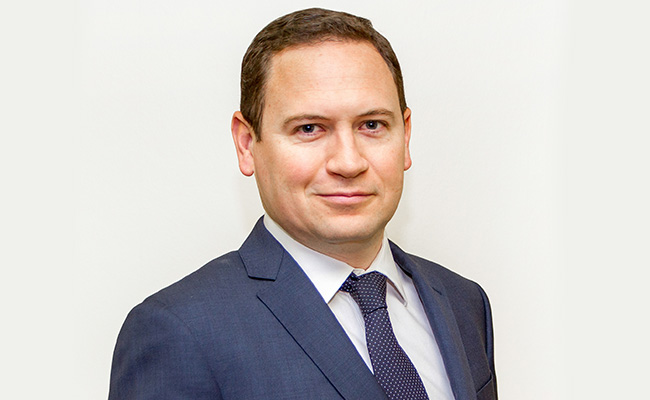It looks like the infamous RMB Holdings (RMH) remuneration policy is back in the spotlight.
Two years ago a few disgruntled shareholders kicked up a fuss, reasonably enough, given that the top executives were getting millions in bonuses despite wiping out hundreds of millions of rands of value.
Now it seems those bonuses were based on problematic computations that could have added an unjustified 15% to their value.
And at least one shareholder is demanding the money be repaid.
You may – or may not – remember the controversy that broke out in 2023 over the generous packages awarded to the RMH executives. Of course, generous remuneration packages are hardly even newsworthy these days, but RMH’s made the headlines because they were dished out despite the executives overseeing a massive destruction of value.
The company reported a loss of R585m on the sale of its major asset at the time, Atterbury Europe. The actual number was steep enough, but Opportune Investments CEO Chris Logan reckons the real picture was considerably worse. That’s because the timing of the deal was so bad: finalised when the rand was enjoying an unusually strong run, which reduced what the euro asset was converted to when it was sold.
The RMH board brushed off the criticism, saying it reflected the benefit of hindsight.
But it does seem RMH got nothing right when it came to property. Once described as a jewel in the JSE financial sector (before it unbundled its 34% stake in FirstRand), RMH moved into property just as that sector was peaking. It paid a hefty premium to buy a minority stake in Louis van der Watt’s unlisted Atterbury Property Holdings in 2016. Two years later it purchased 37.5% of Atterbury Europe, which it sold in early 2022 to Brightbridge, a company controlled by Van der Watt and associates. It was this sale that led to the R585m knock.
All of this could be put down to poorly timed decision-making by an executive team that doesn’t have a great feel for the property market. Except for one thing – it turns out the group’s remuneration policy had been redesigned in 2021 to accommodate poorly timed decision-making.
After selling off the FirstRand stake the board had decided to “monetise” all its other assets. The focus of this “monetisation” strategy was speed rather than value – or at least that’s how the remuneration committee viewed it.
It didn’t matter at what value assets were monetised; as long as they were sold, executive directors were in line for hefty bonuses. It was a policy that 97% of the shareholders voted to support in 2022. It made no difference that only 59% of the shareholders attended the meeting.
Anyway, it suited the hedge funds, which had swooped into RMH at the first mention of an unbundling. They didn’t care about the rubbish price realised on the sale of Atterbury Europe – they just wanted to get the special dividends paid out after asset sales and move on.
Shareholder activist Albie Cilliers reckoned the final leg of the monetisation process offered an opportunity to ensure a better outcome for shareholders.
RMH currently owns 38.5% of Atterbury Property Holdings and has control of Integer Properties, which has a portfolio of office, retail and industrial property. It has a net asset value of 66c a share, though the share only trades at about 41c.
Earlier this year Cilliers bought just over 15% of the company, making him the single largest shareholder. This meant the board had little option but to talk to him, which in turn meant from here on value rather than speed would determine the “monetisation” process.
Cilliers, you see, was in no rush.
The discrepancy
From the start, Cilliers’ engagements, which both sides say have been fruitful, largely focused on cost-cutting. With only two employees – CEO Brian Roberts and CFO Ellen Marais – his focus quickly settled on board fees.
Remarkably, the company has five non-executive directors, including chair Herman Bosman. They don’t get paid a huge amount individually, but in total it’s more than Cilliers thinks is necessary.
Just as he was contemplating these costs came news that the two executive directors had been paid out 40% of a discretionary long-term incentive bonus awarded back in 2020. It was the final portion of the award that had been paid out in three annual instalments – 2023, 2024 and 2025.
According to RMH’s remuneration report, which is a bizarrely complex document for a company of any size, the vesting conditions for this portion of the bonus were “achieving defined KPIs [key performance indicators] in strategy execution, governance, relationships, PR and regulatory engagements”. (Based on the opacity of the badly written remuneration report, which seems like a copy-and-paste job, it’s hard to understand how they could have scored on “governance, relationships and PR”).
To say Cilliers was unhappy would be an understatement. But, after some back-and-forthing of emails he realised there was nothing that could be done. The discretionary (or qualitative) portion of the bonus had apparently been paid out in strict accordance with the shareholder-approved remuneration policy.
However, during all this e-mailing, Cilliers came across what he reckoned was a discrepancy in the remuneration committee’s calculation of a different chunk of bonus. It was the portion of the bonus relating to RMH’s growth in total shareholder return compared to growth in GDP.
It should be a straightforward calculation, and the first part was.
The compound annual growth in total shareholder return over the five years from June 30 2020 to June 30 2025 was 12.57%, with the loss in share price value (down from 164c to 44c) more than compensated for by dividend payments of 252.42c over the period.
But the second part turned out to be a bit messier. It should have been straightforward – just get the GDP figures for the exact same five-year period. But instead, the remco used the GDP figures from Q1 2020 to Q1 2025. It came up with a nominal annualised figure of 6.85%.
Cilliers, who is a stickler for detail, was not one bit happy when he discovered the disparity in the two measuring periods. He would have been unhappy under any circumstances, but in this case the choice of starting period had particularly significant implications because of Covid.
Recall how the economy had been badly hit during April, May and June of 2020. (Covid was also responsible for a massive hit to equities. In January 2020, for example, RMH was trading at about 250c a share.)
When Cilliers calculated the Reserve Bank’s GDP figures, using the June 2020 GDP figure, he came up with an annualised growth figure of 9.24% for the five years from June 2020 to June 2025.
That might not seem like much of a difference, but it means GDP growth over the period was a whopping 35% stronger than that calculated by RMH.
Which in turn means RMH’s total shareholder return vs GDP performance was substantially less impressive than the remco had allowed for in its bonus calculation.
RMH’s remco chair Murphy Morobe did not respond to Currency’s e-mailed request for comment. According to Cilliers, the committee is satisfied that its policy is consistent with the principles of fairness and accuracy.
He isn’t, and now wants to see the computations for the bonus payments made at the end of 2023 and 2024. Cilliers reckons the executives could be required to return about 15% of their bonuses, which would run to several million rands. If not, he will look to his legal options – including a derivative action against the executives.
Top image: Albie Cilliers and Herman Bosman.
Sign up to Currency’s weekly newsletters to receive your own bulletin of weekday news and weekend treats. Register here.












